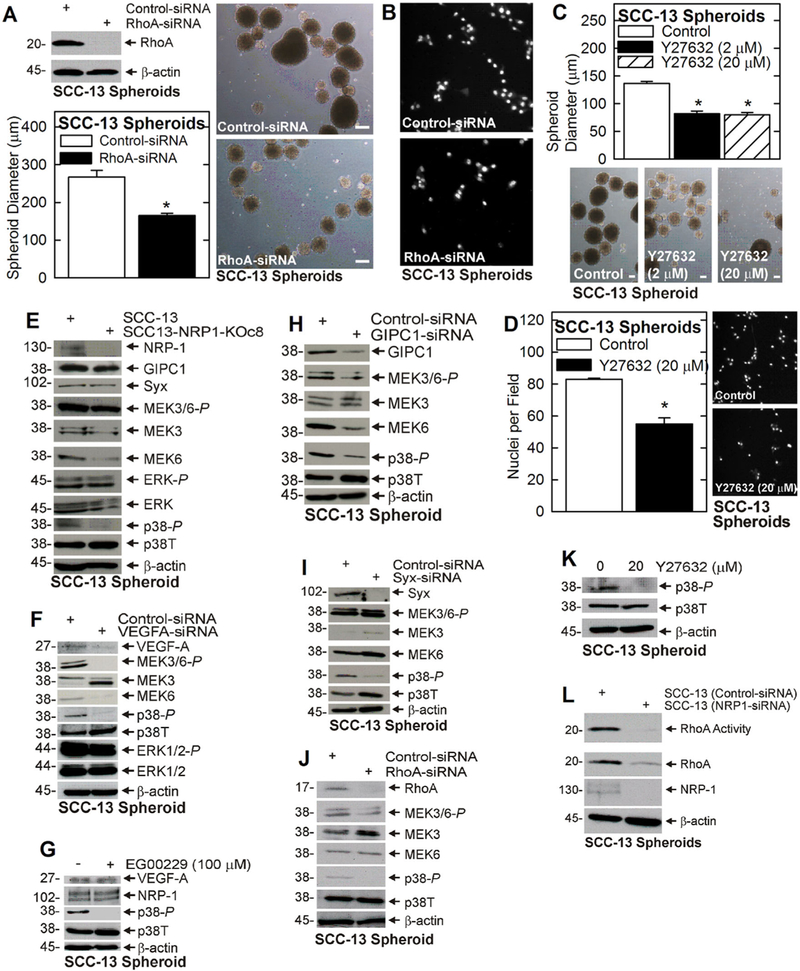FIGURE 2.

RhoA is required for the ECS cell phenotype. A and B) SCC-13 cells were electroporated with 3 μg of control- or RhoA-siRNA and tested for spheroid formation and invasive potential. C and D) Spheroid formation and invasive potential were monitored after treatment with 0 or 20 μM Y27632, a ROCK inhibitor. E) Wild-type and NRP-1 knockout ECS cell extracts were monitored for signaling protein activity. F) SCC-13 cells were electroporated with 3 µg of control- or VEGFA-siRNA, grown as spheroids, and at 5 d assayed for the indicated proteins. G) SCC13 cells were grown as spheroids for 3 d and then treated for 48 h with 0 or 100 μM EG00229 before extracts were prepared for immunoblot. H-J) SCC-13 ECS cells were electroporated with 3 µg of control-, GIPC1-, Syx-, or RhoA-siRNA and impact on MAPK signaling was assayed. K) SCC13 ECS cells were grown as spheroids for 3 d prior to treatment for 48 h with 0 or 20 μM Y27632 and p38 activity was measured. L) SCC-13 ECS cells were electroporated with control- or NRP-1-siRNA and after 48 h extracts were prepared to monitor RhoA level and activity. Similar results were observed in three experiments. The bars = 100 μm. All graphical data is presented as mean ± SEM and the asterisks indicate a significant change, n = 3, P ≤ 0.001. [Color figure can be viewed at wileyonlinelibrary.com]
